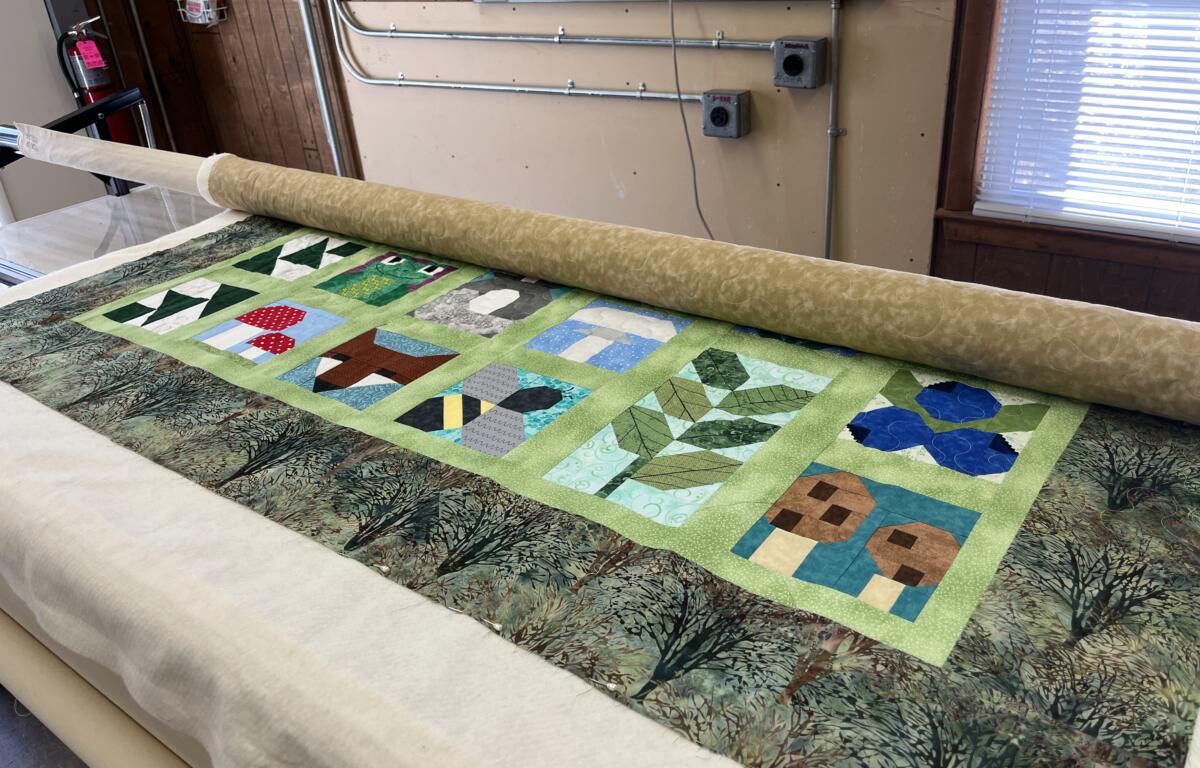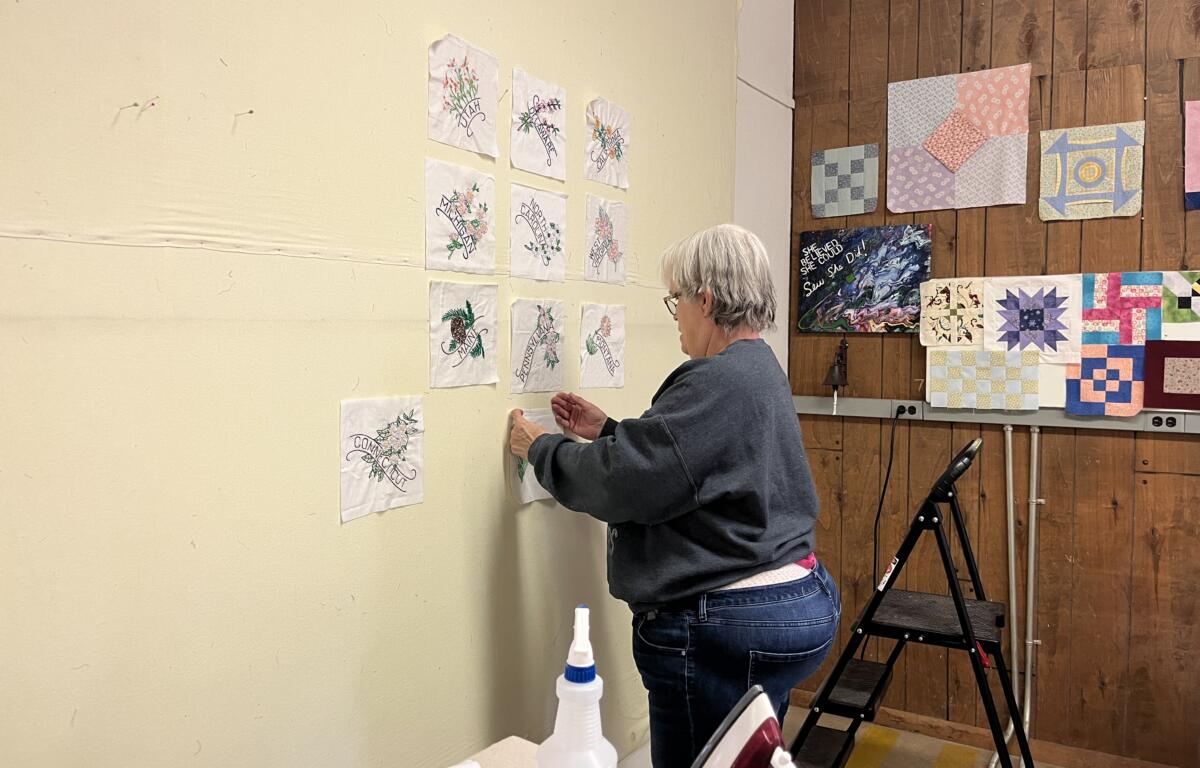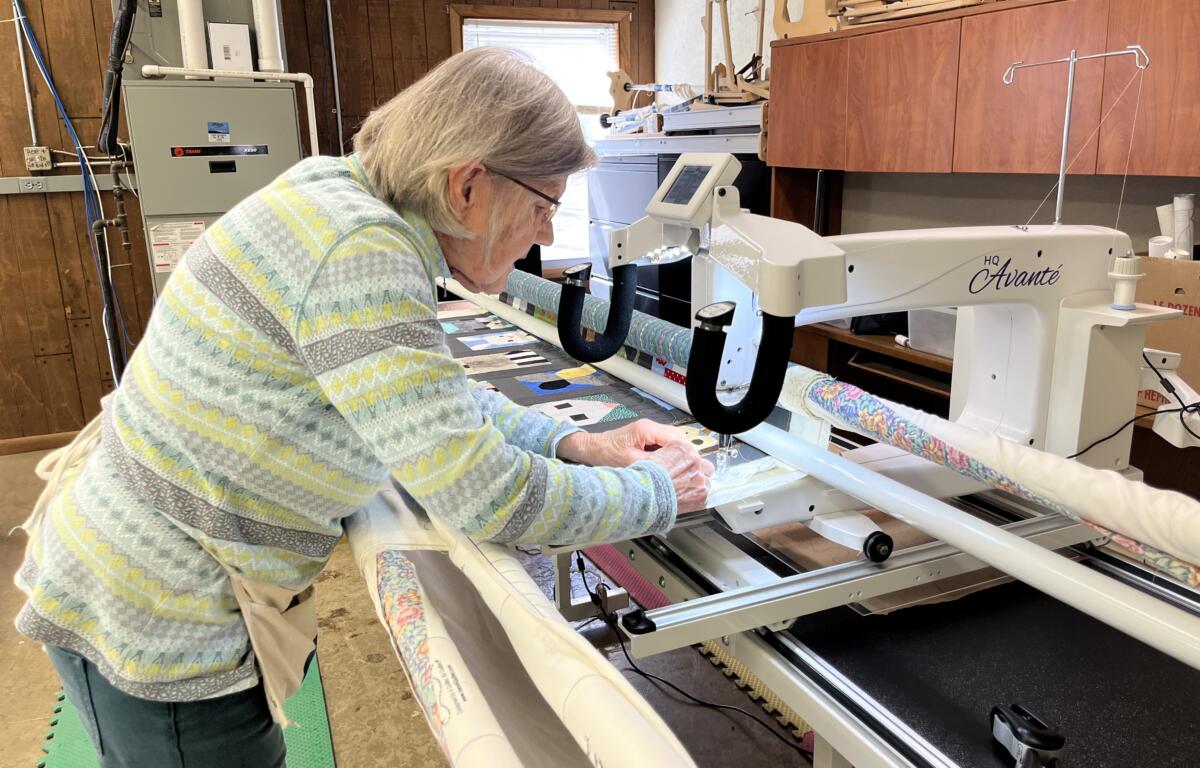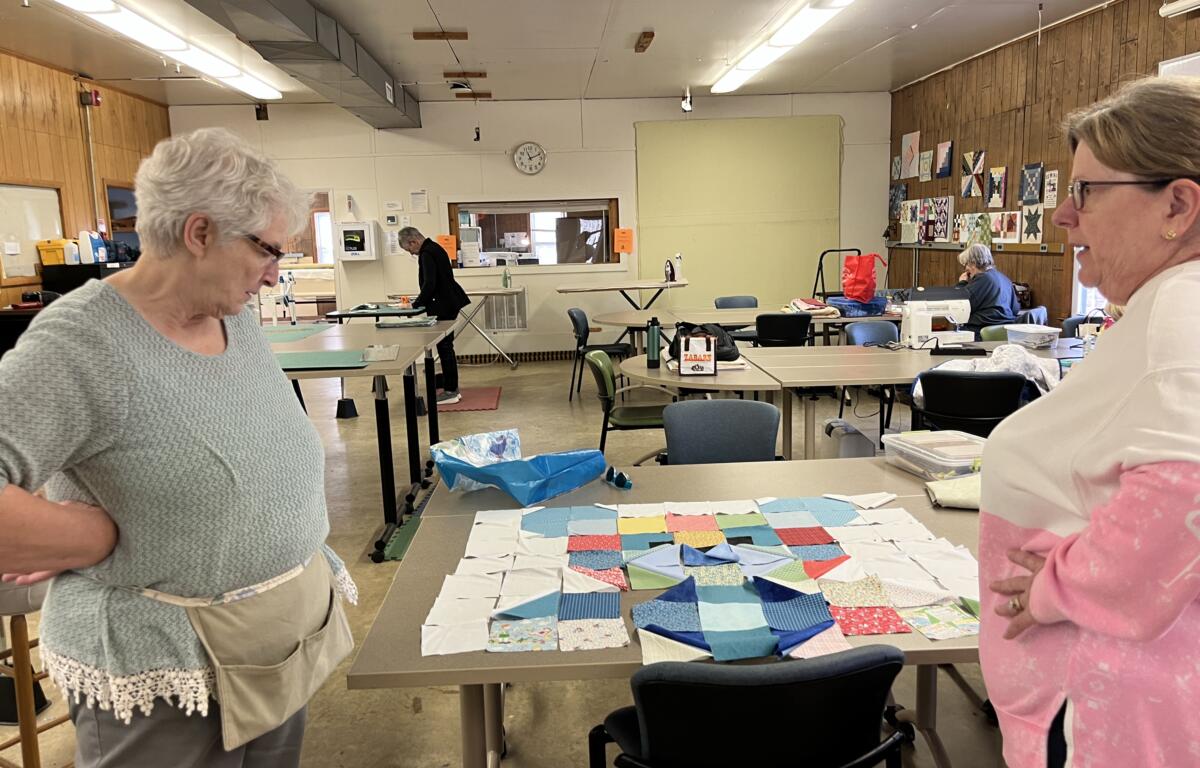HAYWOOD COUNTY, N.C. (828newsNOW) – Canning, broom making, bee keeping and wilderness skills are not the sort of courses a college freshman expects to take, although they undoubtedly sound more enjoyable than chemistry or calculus. A small school in W.N.C. offers those classes to not only their students, but to the public as well.
Haywood Community College (HCC) in Clyde, N.C. recognizes that education is a lifelong journey. They offer a wide range of courses outside of general education in their Continuing Education department. Anilia Hornsby heads the creative arts division which oversees some of the more unusual, yet soul-filling classes offered.
Quilting Class at HCC
One of the Continuing Education department’s most beloved classes is quilting, taught by Lani Hendrix. She has been teaching upholstery at HCC since 1981 and quilting for more than 20 years.
Hendrix’s students occupy the Oak Building on campus with the quilters upstairs and the upholsterers downstairs. All the equipment and materials the students need are onsite, which is in part responsible for both program’s high retention rates. Students return semester after semester to Hendrix’s sections.
But the retention rate is more likely a result of Hendrix’s personal relationship with her pupils. “This is my other family,” she commented, surrounded by women who have been taking her classes for many years, in some cases more than 20 years. Hornsby added, “It is more than a class.”

Despite working with some of the group for two decades, Hendrix joked she must remind her class “over and over to pick up your needle and pull your thread” when using sewing machines. Repetitive teachings like these have taught Hendrix the importance of patience.
While she does some teaching, Hendrix is not the only instructor in the room. Her students collaborate with each other constantly, giving one another ideas and inspiration, guidance and hearty laughs.
“We critique everybody’s [quilts],” Hendrix commented. “I think we all learn from each other, always.” Hornsby chimed in, “They really help each other.” The student’s comradery helps speed newcomers along, leading them to learn more quickly. “There is every level of people here,” Hendrix said, emphasizing beginners are welcome.
The atmosphere in the two-story workshop is anything but a prison-like college classroom. It is alive with pure creativity and true friendship. To a certain extent, the quilts are simply an excuse for the group to spend quality time with each other.
Hendrix is very supportive of the members of her three weekly quilting classes, each five hours long. “I do not think I have ever seen a quilt I did not like,” she said. Their time in the Oak Building weekly is not long enough for many of the ladies, who work on their projects outside of class hours.
One of Hendrix students, who had been in the class for the past 21 years, warmly relayed, “I look forward to it. I miss it when we are not in session.” With four sessions a year, each lasting eight weeks, Hendrix leads her three quilting classes for a combined 96 days a year, totaling more than 450 hours in the shop – and that is just the quilting classes. She teaches two weekly upholstery classes too.
The Art of Quilting
Before access to quilting materials became abundant, Hendrix explained, quilters used whatever they had on hand to create the beautiful blankets – old clothing, pajamas and feed sacks.
Tapestries, which she likened to the royal predecessors to quilts, were like “crazy quilts with little, tiny pieces of fabric.” Hendrix and her students avoid that level of detail, probably to maintain their sanity. Working on one bed cover for months or years is already hard enough. One student mentioned the piece she was finishing up had taken three semesters in Hendrix’s class.

Quilters used to employ peculiar elements to create their masterpieces. Hendrix explained they “sewed fabric to the newspapers to keep it from unraveling.” Newspapers have given way to quilting machines. Essentially giant sewing machines, the mechanisms hold the fabrics in place, use a laser-guided line to make stitching lines more consistent and make the whole ordeal speedier.
When prompted on how long a quilt takes to make the modern way, “It varies wildly,” Hendrix replied. “It depends on the pattern.” Some patterns are more complicated than others, generally depending on the number of layered fabrics and the shapes in the design. Even with quilting machines, the quickest quilts take a day to sew, and that is only if the design is preplanned and the fabric is precut.
Hendrix’s Upholstery Class
Downstairs are about a dozen upholstery machines, which differ from their upstairs counterparts by being stronger and faster; resilient enough that Hendrix has sewn through half inch plywood with them.
Furniture her students are reupholstering line the back wall of the shop – benches, chairs and chaise lounges.
Hendrix has created “at least 60 quilts” in her lifetime, many of which have been donated to various causes such as the Ronald McDonald House and infants in neonatal intensive care units (NICU). Others have gone to the babies in her family.
60 quilts sounds impressive until Hendrix relays the astonishing number of chairs she has upholstered. By her estimate, it is in the thousands.
Hendrix plans to continue teaching upholstery and quilting at HCC for the foreseeable future. “As long as I can, I guess, as long as I can,” she said.

You Are Invited
Hendrix loves to show off her student’s projects. She invites anyone to come visit during class times to see the artistry in the workshop. “People can come by and visit anytime to see what we do,” she said.
If you are interested in learning the art of quilting, Hendrix pleads, “Come and take a class before you go buy all the stuff.” Everything needed to learn is available at HCC, plus, Hendrix and her students are ready to come alongside you in the learning process.
During the month of June, quilts and upholstered chairs made by Hendrix’s students will be on public display in the Sycamore Building on the HCC campus. From 4-7 p.m. on May 30, 2025, an opening ceremony for the exhibit will be held.
If you are interested in taking a class from Lani Hendrix or one of the other creative arts classes in the Continuing Education department, enrollment is opening soon for summer courses. Find a section by clicking here.


